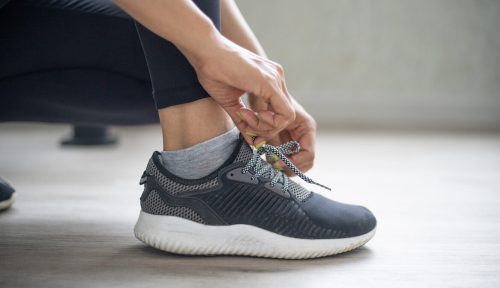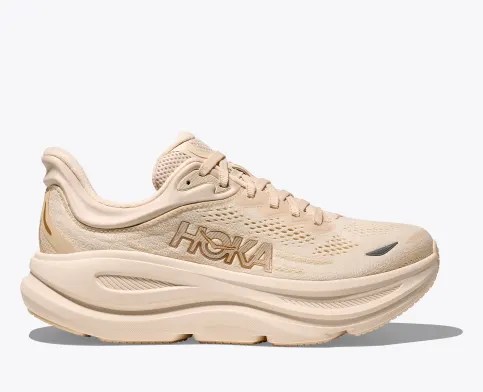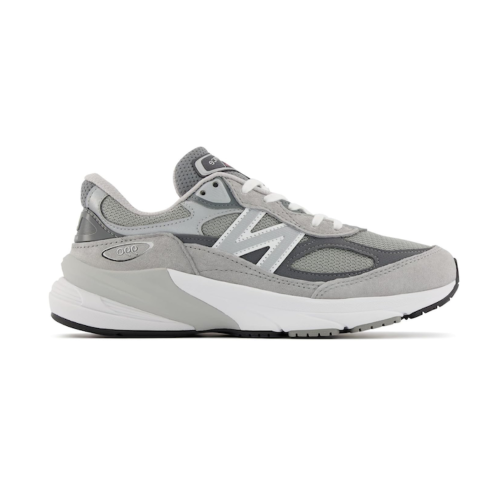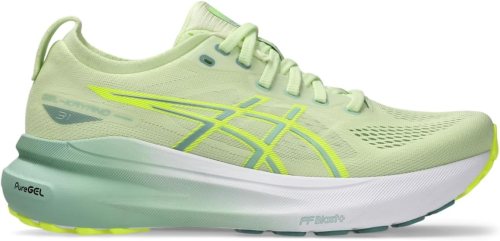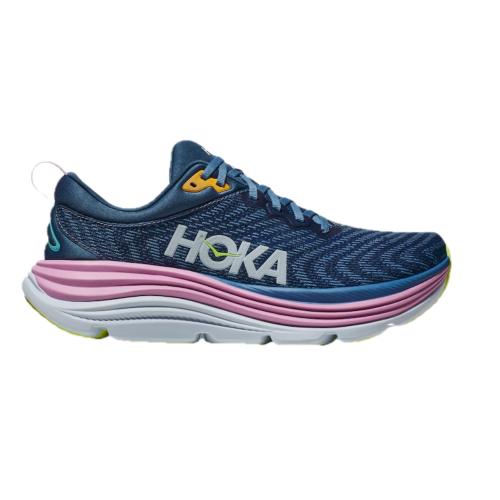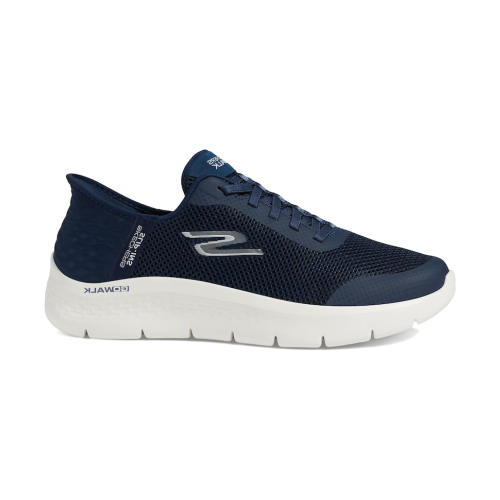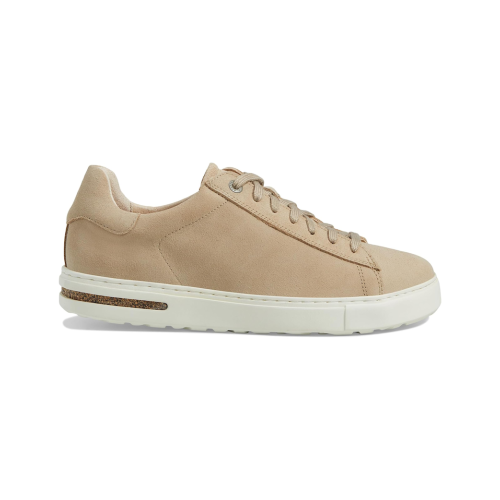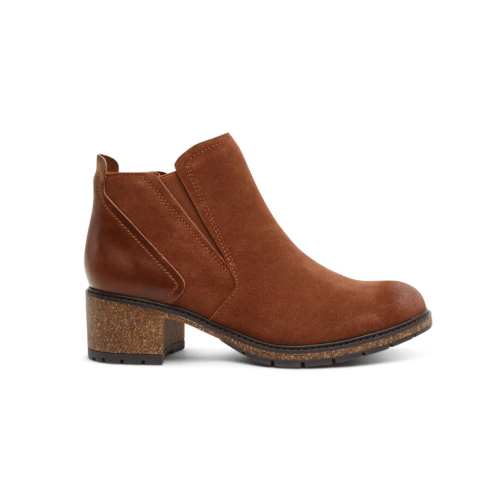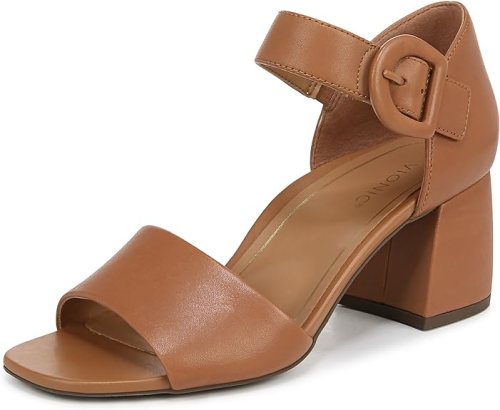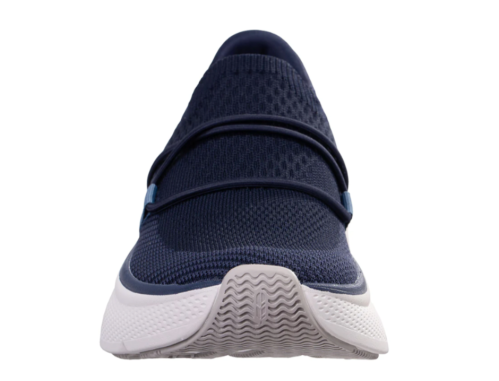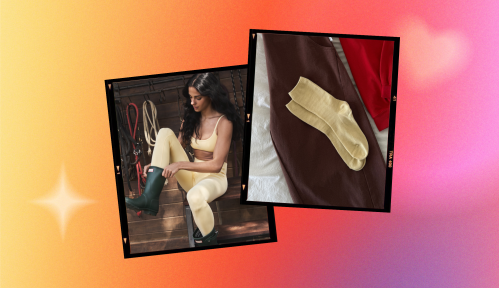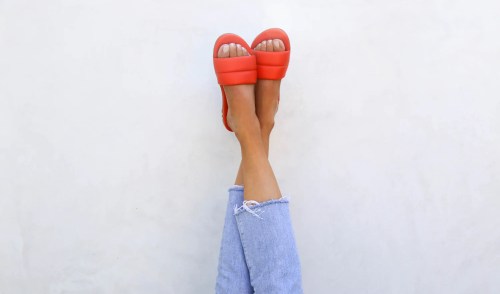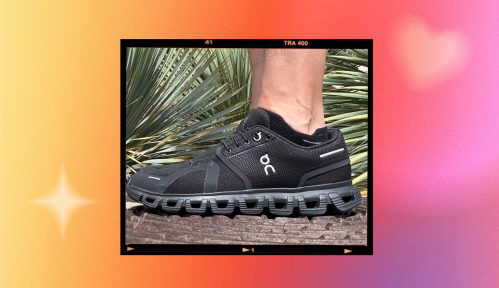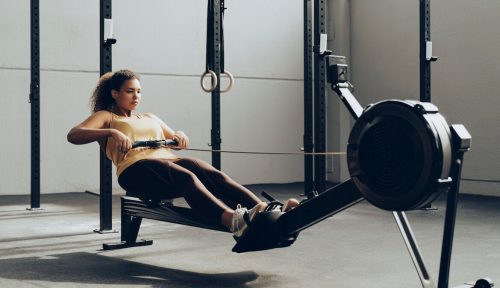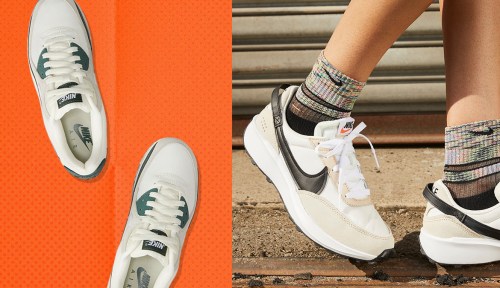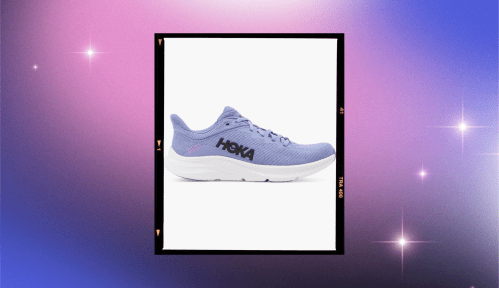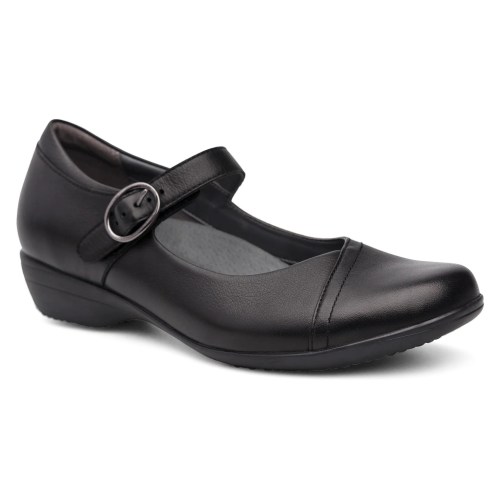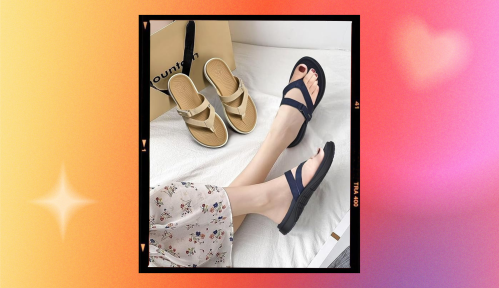Our editors independently select these products. Making a purchase through our links may earn Well+Good a commission
Fun fact: The word “orthopedic,” stems from the Greek words that translates to “correct the foot.” For the uninitiated, Nelya Lobkova, DPM, a podiatrist in New York City, explains that orthopedic shoes are made for people with foot problems and issues that originate in the ankles, knees, or lower back. Generally, orthopedic shoes are wide, supportive, feature extra depth in the toe box area, and have comfortable insoles. All in all, when wearing orthopedic shoes, your feet should feel as if they are walking on clouds, not concrete. We spoke with podiatrists to learn what to look for in orthopedic shoes, then rounded up a few of their favorite (actually cute) pairs for you to explore and shop.
Experts in This Article
Elena Wellens, DPM, is a podiatric surgeon at Rothman Orthopaedics in Philadelphia, PA.
board-certified podiatrist and founder of Step Up Footcare in New York City
Best orthopedic shoes, at a glance
- Best orthopedic foam: Hoka Bondi 9, $170
- Best orthopedic classic: New Balance 990v6, $200
- Best orthopedic gel: Asics Gel Kayano 31, $165
- Best orthopedic shoes for comfort: Hoka Gaviota 5, $175
- Best casual: Skechers Go Walk Flex, $75
- Best orthopedic hiking shoe: Kuru Chicane, $165
- Best for arch support: Birkenstock Bend Suede, $160
- Best orthopedic boot: Aetrex Frankie Boot, $170
- Best orthopedic mule: Dansko Talulah, $145
- Best orthopedic heel: Vionic Chardonnay Heeled Sandal, $140
- Best orthoepedic slip on: Revitalign Maia Sneaker, $110
- Best Mary Jane: Dansko Fawna, $140
Shop the best orthopedic shoes for women
Sizes: 4-12 (in regular, wide, and extra-wide) | Colors: 10
For walking and running, Dr. Wellens is a fan of the popular Hoka Bondi sneakers (Bondi 9 is the latest iteration) because they offer excellent stability, support, and shock absorption, which are things you want in a good orthopedic shoe. These shoes have a seal of acceptance from the American Podiatric Medical Association, meaning podiatrists reviewed them to ensure they promote foot health. They also come in fun color combinations, so you can’t go wrong with these cool and comfortable ortho shoes.
Pros:
- Excellent cushioning and shock absorption
- Supportive
- Neutral stability
- Recycled, vegan materials
Cons:
- Pricier shoe
- The rocker heel might be too much for some people
Sizes: 5-12 (available in narrow, medium, wide, and x-wide widths) | Colors: 3
The model-approved New Balance 990v6 sneakers also tick all the boxes that Dr. Wellens looks for in orthopedic shoes for women. Stability? Check. Support? You bet. Shock absorption? Yup! The latest model of a favorite has new midsole cushioning you will love. These trendy shoes pair well with many outfits so that you can rock them for walking and style purposes. Win-win.
Pros:
- X-wide width available
- Excellent cushioning
- Excellent arch support
- Grippy tread
- Forefoot rocker
Cons:
- Limited colors
Sizes: 5-10 (available in narrow, medium, and wide widths) | Colors: 20+
Dr. Wellens also enjoys the Asics Gel-Kayano lineup of orthopedic walking and running shoes. The gel technology in the sole ensures a softer step. The Gel-Kayano 31 style can also provide added comfort to overpronators–folks whose foot rolls inward and arches flatten when walking. These sneakers offer the support your feet need and come in 6 color combinations that range from traditional black accents to cheery citrus hues.
Pros:
- Excellent arch support
- Neutral stability
- Great cushioning and shock absorption
- Ideal for running and walking
Cons:
- Only available in standard widths
- Those with high arches may feel less comfort
Sizes: 5-12 (available in wide widths) | Colors: 8
Walking (and running) in the Hoka Gaviota 5 makes your feet feel as if they are blanketed in marshmallows and you’re treading on clouds. Really. You can attribute this feeling to the brand's signature EVA foam and stabilizing technology. Your ankle is surrounded with a plush tongue and collar, so nothing is rubbing the wrong way. At the same time, the upper mesh is light as air, providing plenty of breathability. This low-drop shoe (6 millimeter heel-to-toe drop) is designed to stop overpronation or too much of that inward roll as you walk or run. You’ll also love this shoe if you have wide feet as the toe box is certainly roomy–no cramped toes here.
Pros:
- Recycled materials
- Vegan
- Incredibly soft and cushioning
- Very stable
- Spacious toe box
Cons:
- Expensive
- May feel too wide for some
- Can look bulky
Sizes: women’s 5-13 (available in medium and wide widths) | Colors: 7
While all orthopedic shoes should be comfortable, these are great for casual, everyday activities. Dr. Wellens says you can’t go wrong with a shoe from Skechers’ Go Walk lineup, which includes everything from flip-flop sandals and slides to boots and sneakers. The Go Walk Flex is a great sneaker choice since it features easy lace-up engineered mesh which makes putting on and taking off low-effort, a synthetic upper, and a shock-absorbing cushioned midsole. Basically, it’s a bouncy, cushiony shoe ideal for those who want to feel like they’re walking on clouds—even if they’re walking or standing all day long.
Pros:
- Machine-washable
- Lightweight
- Cushioned
- Vegan
Cons:
- Limited sizes
- Only available in standard width
- Only one color
Sizes: 6-12 (available in medium and wide widths) | Colors: 6
Although they’re designed for hiking, Dr. Wellens says these Kuru Chicane shoes offer comfort for everyday activities thanks to their ergonomic fit (think built-in arch support, rounded heel cups, and a curved insole). Bonus points: The moisture-wicking liners and breathable mesh will keep your feet cool.
Pros:
- Excellent arch support and solid tread
- Ergonomic fit
- Designed with pressure-distribution
Cons:
- Expensive
- Designed for hiking—might be too much for casual wear
Available sizes: 5-11.5 | Colors: 3
If you’re already a fan of the classic Birkenstock sandals, known for their cork footbed with arch support and a deep heel cup, Dr. Lobkova says you’ll be delighted to learn that the brand also has a sneakers version. The footbed provides a raised arch to support flat feet and fallen arches—the shoe has the same design and offers the same benefits. The upper is constructed from soft suede leather, and the cork-latex footbed is entirely removable if you want.
Pros:
- Moldable cork footbed (it’s removable, too)
- Built-in arch support
- Deep heel cups for stability
Cons:
- Cork might be uncomfortable to break in
- Low ankle support
Sizes: 5-5.5-10.5-11 | Colors: 3
What style of work shoe is best for you will, of course, depend on your line of work, but if you’re looking for something that you can dress up and down without looking too casual, these boots, recommended by Dr. Wellens, fit the bill perfectly. What makes them stand-out boots is their insole, which provides arch heel support, and overall stabilization—and it’s the reason why you can wear these for hours on end with no pain. There’s also stretchy gore material on both sides, making the fit more comfortable while you wear them, and when you put them on or take them off. The upper material is genuine leather, and the outsole is a lightweight rubber and cork, so they don’t feel heavy. Plus, they featured a lug sole for traction (they’re not specifically non-slip, just FYI). Another bonus? They’re weather-friendly (their construction is fully sealed, as to prevent water from seeping in), making them a great choice year-round.
Pros:
- Built-in arch support
- Durable outsole
- Stretchy and adjustable
- Weather-resistant
Cons:
- Pricier option
- No zippers
- Only available in standard width
- Not non-slip
Sizes: 5.5-6 to 11.5 to 12 | Colors: 3
The Dansko Talulah mule is the ideal transitional shoe that will still help support your foot. Since these slip-on, they are perfect for errands–dressing up your outfit with its sleek style. The soft-milled nubuck uppers are comfortable, while the contoured footbed with memory foam provides ample support. Even though the heel is made of wood, the rubber outsole keeps it sturdy and the PU midsole provides enough grip without having your foot slip out.
The Talulah mule has the APMA seal of acceptance, making them the go-to orthopedic shoes for work that may require extended standing (think chefs, nurses, and doctors). Keep in mind that these are designed for flat feet, so if you have a high arch, your foot might have to adjust. “I would give it around three weeks,” Dr. Lobkova says.
Pros:
- Easy to slip on
- Great for flat feet
- Soft leather upper
- APMA approved
Cons:
- May need a break in period if you have a high arch
Sizes: 5-13 (in standard and wide) | Colors: 11
Vionic is an orthopedic dress shoe brand Dr. Wellens recommends. In particular, consider these oh-so-stylish heeled sandals that come in a slew of different colors. Thanks to a sculpted heel shape that provides stability and a contoured footbed for arch support, they give you a little height without sacrificing comfort. If these heeled sandals aren’t your style, she recommends browsing Vionic’s site, as the brand has many other comfortable and stylish options.
Pros:
- Stable heel
- Built-in cushioning and arch support
- Lots of color options
Cons:
- Buckle strap is actually Velcro (which might be a style kill for some)
Sizes: 5-12 (available in wide widths) | Colors: 5 (comes in both neutral and colorful designs)
Love a comfy shoe, but hate having to tie up your laces every single time? Look no further than our favorite, podiatrist-approved slip on: the Revitalign Maia Sneaker, produced by the Waco Shoe Company. The slip on design makes this shoe convenient all-around—whether you're in a rush or have limited mobility. Outside of its slip on and breathable design, this shoe features Pure Walking technology that offers all-day comfort and orthotic support. You can even purchase insoles as add-ons to relieve any foot comfort and cater to your feet's individual needs. Plus, there's a solid variety of colors to choose from, ranging from neutrals that match any outfit to colorful ones that show just a bit more personality.
Pros:
- Slip on design
- Flexible, but cozy fit
- Lightweight sneaker
- All-day comfort
- Great for casual wear
Cons:
- Don't come with laces, so it's essential to get the right size for a comforting fit
Sizes: 4-13 (available in wide widths) | Colors: 2
Another great podiatrist-recommended arch support orthopedic shoe option are these classic Mary Jane shoes by Dansko which feature a removable cushioned footbed with added arch support. The color options are limited, but they make up for it by offering regular and wide width sizes. Dansko is known for its high-quality footwear, and you can see it (and feel it) with its burnished leather uppers and supremely soft microfiber lining. It’s a great option for a more dressy-looking shoe without feeling like a heel or unsupportive flat.
Pros:
- Built-in arch support
- EVA midsole
- Durable outsole
Cons:
- Limited colors
- Sizing is a little unusual
Who are orthopedic shoes good for?
Traditionally, orthopedic shoes are meant for people with pain and deformity in the feet, ankles, knees, or lower back. Elena Wellens, DPM, a podiatric surgeon at Rothman Orthopaedics, notes that people with arthritis, plantar fasciitis, tendonitis, and flat feet most commonly benefit from orthopedic shoes. That said, these functional or alignment issues aren’t always obvious, so Dr. Lobkova advises seeing a podiatrist for diagnostics and recommended footwear for your specific needs.
These days, however, you can (and should) consider orthopedic shoes if you spend a great deal of time on your feet.
If the term “orthopedic shoes” conjures up images of grandma sneakers, there’s good news: You no longer have to choose between style or comfort. “As our understanding of foot biomechanics and its relationship with foot and ankle conditions (such as plantar fasciitis, tendonitis, and arthritis) has evolved, more shoe manufacturers are designing shoes with sound orthopedic components while incorporating style as well,” Dr. Wellens says.
Dr. Lobkova agrees, “The current trend moves away from the classification ‘orthopedic’ and towards ‘comfort’ shoes in an attempt to make these shoes more fashionable. In other words, orthopedic shoes are now more stylish, even cool. Keep scrolling to see what we mean.
What is the difference between orthotics and orthopedic shoes?
Orthotics are removable insoles that are placed inside of shoes. “There are prefabricated or over-the-counter orthotics and custom orthotics, also called functional orthotics,” Dr. Lobkova explains. Custom orthotics take into account the individual’s foot type and tilt the heel into a neutral position (the optimal position for walking and activities), as well as provide a firm arch support. Custom orthotics are made from different layers of super high-density foam called polypropylene and EVA, allowing them to be thin enough for dress shoes or compatible with something like ski boots. These orthotics are made in a podiatrist’s office using special technology that scans the feet.
Over-the-counter orthotics provide some support, however, you need to understand your foot mechanics so as not to end up with a pair that doesn’t suit your foot. Consider the material as well. Something that is too flexible may not actually provide the support you need, Dr. Lobkova points out. “Over-the-counter insoles will typically last six to nine months, whereas custom orthotics can last for three to four years when worn daily,” Dr. Lobkova says. She recommends Superfeet High-Arch Support insoles and Sole Active insoles.
The goal of wearing orthotics is to prevent problems or pain in the lower extremities and lower back, especially the weight-bearing bones of the heels and knees. “I would say that everyone, young and old, would benefit from orthotics inside their shoes,” Dr. Lobkova says.
Orthopedic shoes have orthotics inside of them. However, the orthotics in orthopedic shoes are prefabricated–meaning there is a one-size-fits-all approach. Given that every person has a unique foot structure, you may have to try a few orthopedic shoes, even within the same brand, to land on a fit that’s just right for you. Still, compared to regular shoes, orthopedic shoes are typically wider, more supportive, and have a deeper toe box—all features that make them more comfortable, Dr. Lobkova explains.
What to look for in orthopedic shoes
1. Comfort and a good fit
First and foremost, Dr. Lobkova says comfort is key, and the only way to truly know if an orthopedic shoe will work for you is by trying them on and briefly walking around in them. They shouldn’t feel too tight or too loose.
2. A firm heel counter
Note how your heel feels. The shoe’s heel counter (aka, the back part of the shoe) should be firm, Dr. Lobkova says, as that will stabilize the heel and help diminish pain and inflammation in the heel and arch of the foot.
3. Cushioned midsole with arch support
A thick, cushioned midsole is also a must. “The rigidity of the midsole of a shoe dictates the stability of the shoe,” Dr. Lobkova says. A thick, cushy midsole will help prevent excessive impact on the foot. Ensure the insole provides arch support. She recommends looking for a firm elevation in the arch with a deeper heel cup and cushioning in the heel and ball of the foot.
4. Round and deep toe box area
“Many foot deformities occur in the ball of the foot (i.e., bunion, hammertoes, neuromas, etc.), so it is important not to squeeze or irritate this area for a prolonged period of time,” Dr. Lobkova says. An excellent orthopedic shoe for women will have a round toe box with some depth. Narrow and pointy shoes are the opposite of comfortable shoes–save these for short-term jaunts.
5. Rubber outsole with stable grip
The shoe’s outsole also matters. Here’s why: “The rubber outsole dictates the traction in the shoe,” Dr. Lobkova says. “Look for a suitable outsole that provides a stable grip yet is not too bulky.”
Overall, podiatrists recommend avoiding shoes that are too flexible and narrow and don’t provide adequate shock absorption, stability, arch support, and cushioning. To help make your orthopedic shoe shopping experience easier, Dr. Lobkova and Dr. Wellens share what you should consider before purchasing a new pair.
Things to consider before buying
- Your desired activity: As our experts mentioned, orthopedic shoes prioritize stability and support. Still, you’ll want to keep in mind the type of activities you’ll be doing in your shoes. For example, if you’re a hiker, you’ll want a pair with better traction than your average walking sneaker. If you’re planning on spending a long day at a theme park, you’ll want to focus on cushion.
- Your budget: Many shoes that are marketed as “orthopedic” are a little pricier, as they tend to use more materials (for all that added cushion and support!). Still, you can find great orthopedic kicks for less—Skechers and Vionic are two more affordable brands to check out.
- Returns: Take a peek at each brand’s return policy so you know how long you’ll have to try them out. Comfort is personal and, especially when ordering shoes online, you’ll want to know you can exchange sizes or get a refund if they don’t work for you.
Sign up for the Well+Good SHOP Newsletter
Get exclusive deals on wellness, beauty, fitness, and food products that have been hand-picked by our editors.
Got it, you've been added to our email list.
